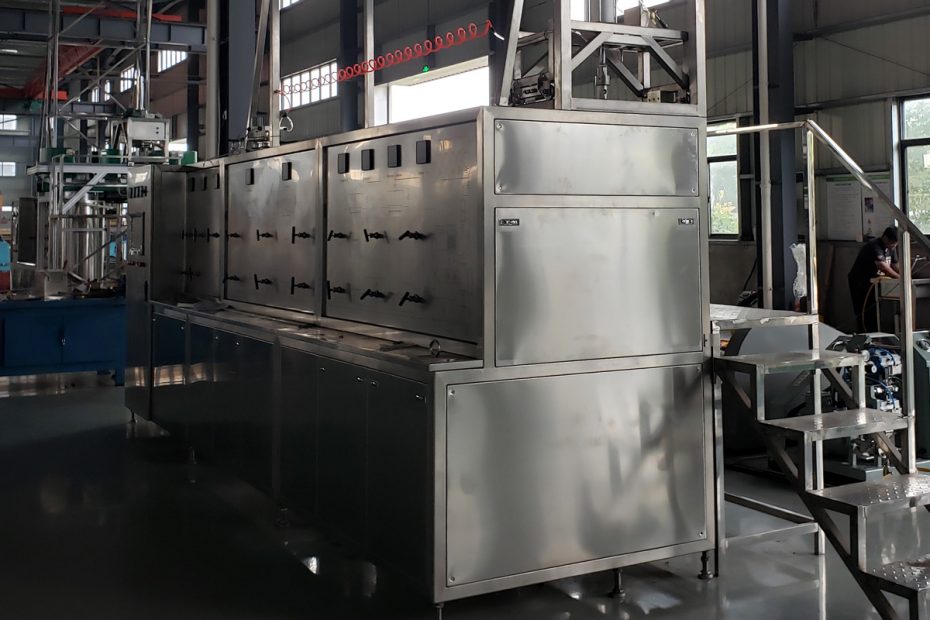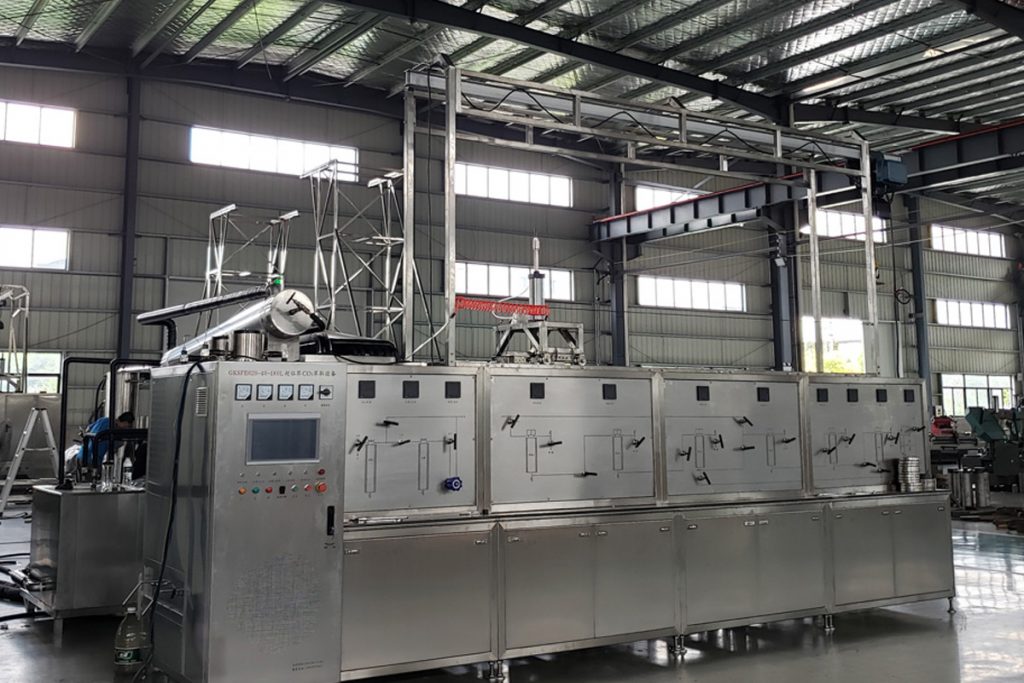Supercritical fluid (SCF) extraction uses high-pressure, high-density supercritical fluid as a solvent to dissolve the required components from a liquid or solid, and then separates the solvent from the extracted components by means of heating, depressurization, absorption (adsorption), etc., to finally obtain the required pure components.
Basic principles of Supercritical CO2 Extraction Process
The SCF extraction process is carried out by utilizing the effects of pressure and temperature on the solubility of SCF.
When the gas is in a supercritical state, it becomes a single phase with properties between liquid and gas, with a density similar to that of a liquid. Although the viscosity is higher than that of a gas, it is significantly lower than that of a liquid. The diffusion coefficient is 10 to 100 times that of a liquid. Therefore, it has good permeability and strong solubility for the material, and can extract certain components from the material.
In a supercritical state, SCF is contacted with the material to be separated, so that it can selectively extract components with different polarity, boiling points, or molecular weights in turn. The density and dielectric constant of SCF increase with the increase of the pressure in the closed system, and the polarity increases. The components of different polarities can be extracted step by step by using program boosting.
Of course, the extract obtained in each pressure range cannot be single, but the optimal proportion of mixed components can be obtained by controlling the conditions. Then, by means of decompression and heating, SCF is turned into ordinary gas, and the extracted substance is automatically precipitated, thereby achieving the purpose of separation and purification. This is the basic principle of SCF extraction.
Five major characteristics of Supercritical CO2 Extraction Process
- Extraction and separation are combined into one. When the supercritical fluid saturated with dissolved substances flows through the separator, the pressure drops and it and the extracted substance quickly become two phases (gas-liquid separation) and are immediately separated. There is no phase change process of the material, no need to recover the solvent, and the operation is convenient. Not only is the extraction efficiency high, but also the energy consumption is low, saving costs.
- The extraction efficiency is high and the process is easy to control. For example, for CO2 near the critical point, slight changes in temperature and pressure will cause significant changes in its density, thereby causing changes in the solubility of the extract. The extraction purpose can be achieved by controlling the temperature or pressure. When the pressure is fixed, changing the temperature can separate the substances; conversely, when the temperature is fixed, reducing the pressure can separate the extract. Therefore, the process is short, time-saving, environmentally friendly, and the extraction fluid can be recycled, truly realizing the green production process.
- The extraction temperature is low. It can effectively prevent the oxidation and dissipation of heat-sensitive components, preserve the effective components intact without being destroyed, and prevent secondary degradation. It can also extract high-boiling-point, low-volatile, and easily pyrolyzed substances below their boiling point. It is particularly suitable for the extraction of heat-sensitive and easily oxidized components.
- Commonly used SCF has low toxicity and no solvent residue. For example, critical CO2 fluid is a gas under normal conditions, non-toxic, and there is no solvent residue after separation from the extraction components, which effectively avoids the toxicity of residual solvents to the human body and pollution to the environment under traditional extraction conditions.
- The polarity of SC can be changed. Under certain temperature conditions, as long as the pressure is changed or a suitable entrainer is added, substances of different polarities can be extracted, and a wide range of choices can be selected. In the extraction of polar substances, by changing the process conditions, especially the addition of various entrainers, the application of supercritical fluid extraction technology has been broadened, making the extraction of many polar substances possible.
Conclusion
Supercritical CO2 fluid extraction technology is a new separation technology in modern chemical separation. It has the characteristics of fast mass transfer rate, strong penetration ability, high extraction efficiency and low operating temperature. This technology has been widely used in medicine, food, chemical industry and other industries.

